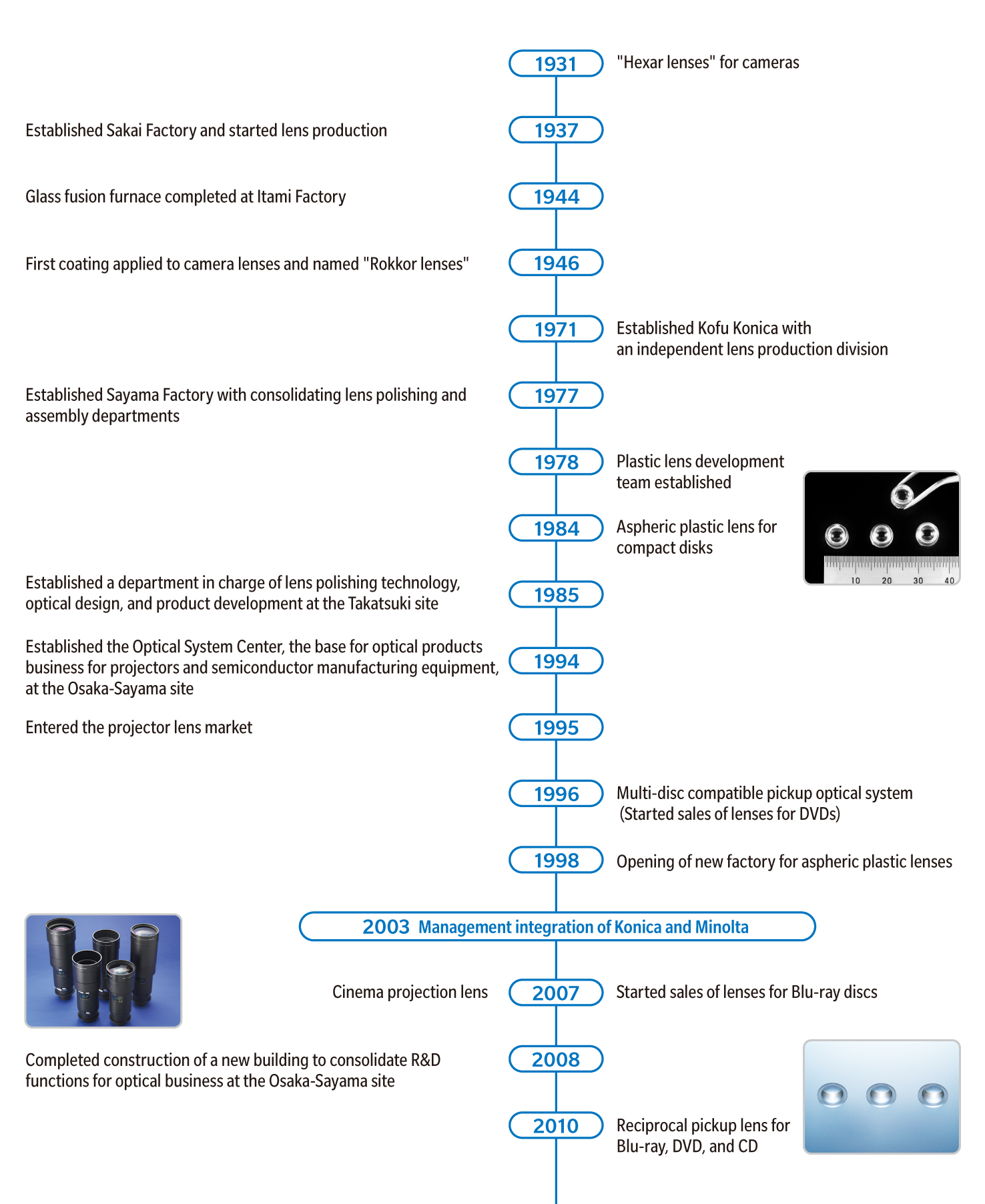INNOVATION STORIES
OPTICAL COMPONENTS
No. 1 Position Attained by Commitment
to Performance
Underpinned by Optical Technology Inherited from Predecessors
- INDEX
Konica and Minolta, both of which were founded as camera manufacturers, developed their proprietary optical technologies and started to manufacture lenses in the 1930s. In the 1970s, the lens division became independent from the camera division at both companies. When the management integration took place in 2003, the two companies complemented each other, with Konica excelling in plastic lenses and Minolta in glass lenses. Although we terminated the camera business in 2006, our DNA in optics has been passed down to the present day in various forms.
We developed some products that captured overwhelming market shares in the course of refining optical design and precision processing technologies. One was the high-quality aspheric plastic lens made possible by ultra-precision molding technology, and another was a projection lens unit for projectors underpinned by glass polishing technology to attain ultimate accuracy.
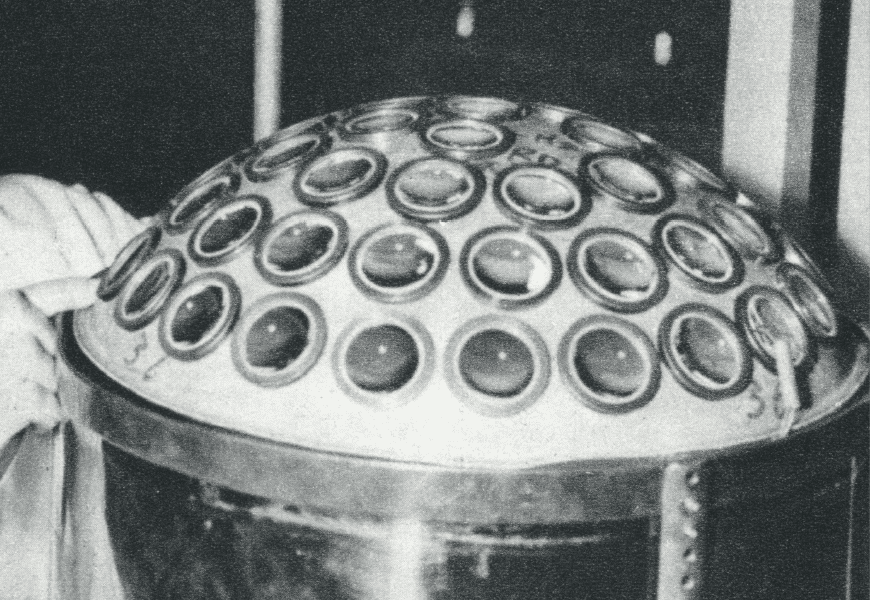
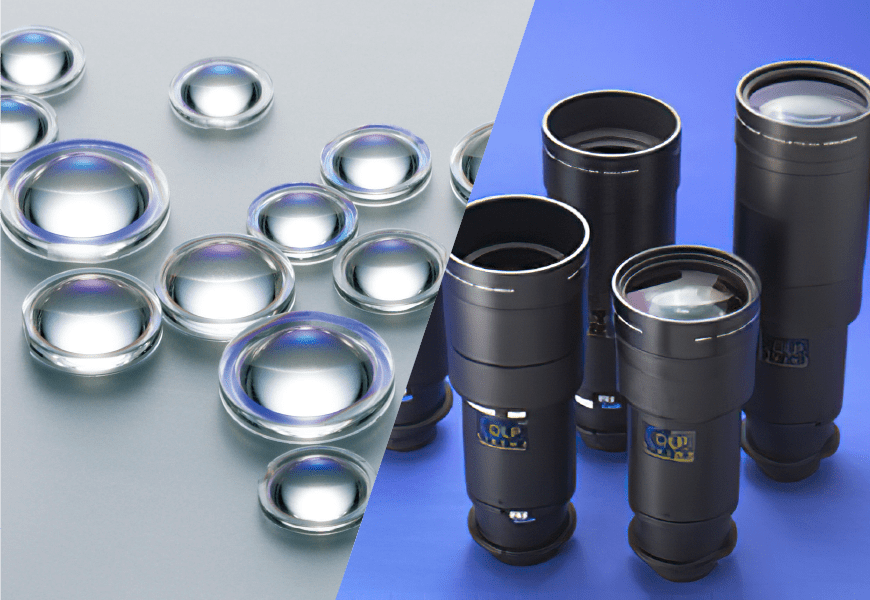
World’s first technology contributing to the spread of CD players
A pickup lens is a key part of drives, which play back and record data on optical discs, such as CDs, DVDs, and Blu-ray discs (BDs). Information, including music and video, can be accurately read by focusing a laser beam from the light source, which is built into the drive, onto a disc. We have constantly held the top market share in this field where extremely high accuracy is required and the required specifications change rapidly as the media evolves.
The development was triggered by an inquiry from a major Japanese electronics manufacturer in 1980 asking if it would be possible to manufacture a plastic pickup lens for CDs. Plastic had the advantages of being cheaper and easier to mold than glass and could be mass produced. However, plastic also posed issues, such as being soft and susceptible to heat as well as adhesion of dust due to static electricity. Despite some skepticism in the industry about the performance of plastic lenses, Konica concluded a joint development agreement with the electronics manufacturer. At first, we worked on developing a lens by combining spherical glass, but in 1982 started to develop an aspheric plastic lens.

In fact, Konica already had a track record in manufacturing aspheric plastic lenses, which were used for the photographic lens of the C35EF, the world’s first compact camera with a built-in flashbulb released in 1975. This camera sold more than 400,000 units, but the quality of the lens was so high that no complaint was received about the plastic lens.
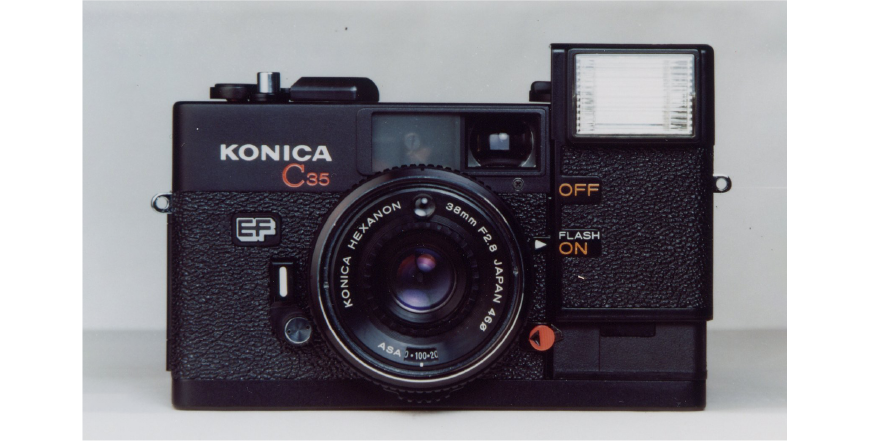
However, it was extremely difficult to develop a pickup lens. The tolerance of the lens with a diameter of about 7 mm was less than 0.2 micrometers (1 micrometer = 0.001 mm). To attain this accuracy, a machining tool that used NASA’s machining technology for aircraft components was introduced to fabricate a mold. Molding was performed and evaluations were made repeatedly through trial and error. Finally, a single plastic lens was developed that delivered the same performance as several glass lenses. In 1984, the successful development of the world’s first aspheric plastic lens for CDs and commencement of mass production were publicly announced. In the same year, the joint development partner released a portable CD player that incorporated this lens at a reasonable price. Other electronics manufacturers followed, leading to the rapid spread of CD players.
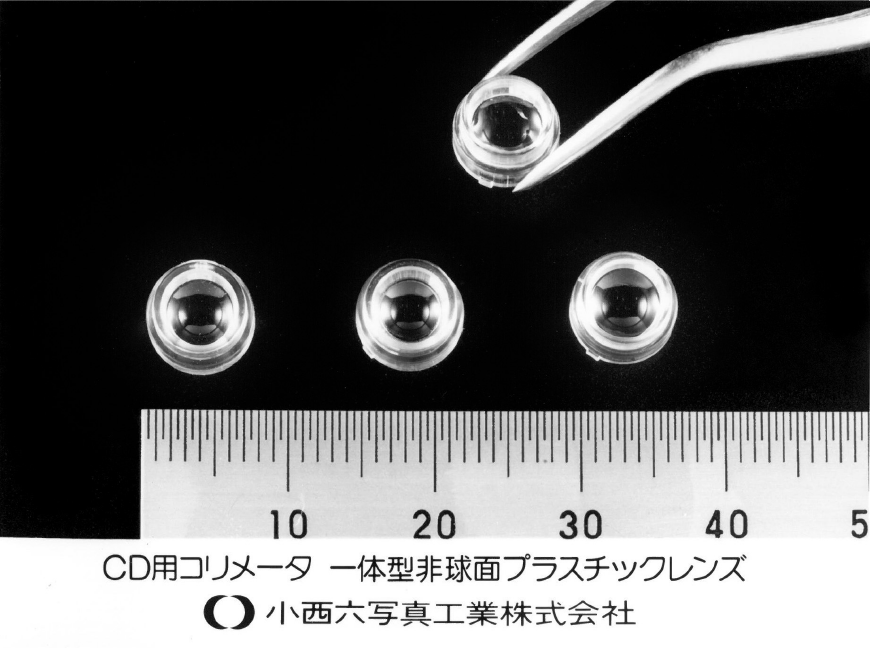
Strength in sharing the true meaning of the feedback from customers and taking quick action
The development of pickup lenses, which started with a lens for CDs, stepped up in line with the diversification of media. In 1996, we became the first in the world to succeed in developing a pickup optical system that supported multiple types of discs and could read and play back optical discs of different thicknesses, such as CDs and DVDs, using a single optical system. In 2002, mass production of a pickup lens for BDs also started. In the same year, the cumulative total production and sales volume of pickup lenses for optical discs exceeded two billion lenses. With its global market share reaching 50%, we established our position as the top manufacturer in the industry.

The next theme was to develop a single lens capable of supporting BDs, DVDs, and CDs. A customer told us they strongly wanted to use the lens for their new product, which was to be released the following year. The development was realized by the synergies between Konica and Minolta, which had been integrated in 2003. A hybrid optical system was created by combining plastics technology refined by Konica with the glass technology of Minolta. In 2006, a player that incorporated this lens was released on schedule, enabling us to meet the customer’s high expectations for us as a top manufacturer. In addition, in 2010, we developed a technology to support three wavelengths of BDs, DVDs, and CDs using a single plastic lens and started to offer the product, leading to even greater market share.
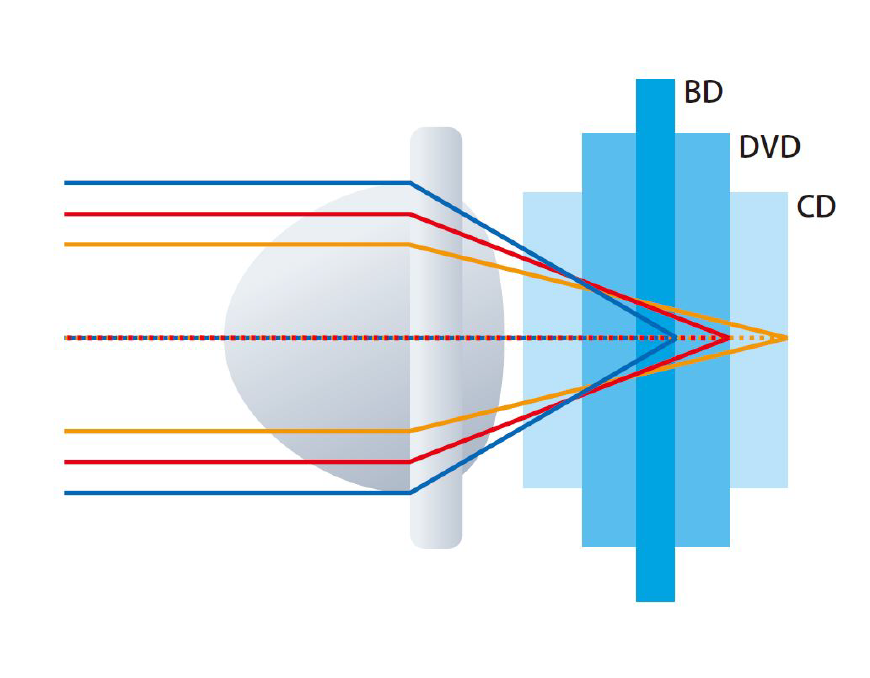
The pickup lens business developed a succession of world-first technologies, but according to the person in charge of sales, “Our strength is also being able to keep pace with the demand for products. Advanced production technologies are important, but we can also quickly meet urgent requests because our production, development, and sales operations work closely together in a compact organization. Our ability to immediately report direct feedback from customers and take quick action was highly significant.”
The pickup lens team, which has made progress with the optical disc industry from the early
days of CDs,
still continues
to support the optical device industry by meeting demand as the dominant supplier.
Cinema projection lens—the result of sincere cooperation
Previously, a projector was used to project movie films, but today, many movie theaters have gone digital, with digital data projected using a projector. These projectors contain a cinema projection lens, for which we have a high market share. This lens, which offers high reliability and performance, was developed by harnessing lens processing technology based on precise glass polishing to project clear images on a large screen.
Minolta entered the projector lens market in around 1995, starting out by developing both LCD projectors and digital light processing (DLP) projectors. However, several years later, it started to specialize in DLP projectors. A DLP projector controls light by changing the inclination of micromirrors, which are arranged all over the digital micromirror device (DMD) chip, for projection on the screen. Our presentation at an academic conference triggered a relationship with a major U.S. semiconductor manufacturer that developed the DMD. Our encounter with the company led to our subsequent business deployment.

In 2000, the digital projector market outgrew its infancy. Demand for business presentations and educational purposes grew, but price competition was fierce. The best-selling products were LCD projectors, which were relatively inexpensive, and single-DMD-chip projectors. Instead of focusing on these segments, however, we developed a lens unit using three DMD chips. Because such lens unit was large and expensive, the sales volume was limited, but we were aware of the long-term advantage of having a competitive edge in terms of high quality underpinned by technology. Thus, we tenaciously continued to develop three-chip projectors.

A turning point came when high-brightness projectors entered the market. Changes in the light source and technological progress made it possible to project brighter images, enabling projection on a large screen. Against this backdrop, high-brightness projectors started to attract attention as devices for projecting digital cinemas at movie theaters in addition to the use at event venues and concert halls. The DLP three-chip lens unit was ideal for this application. Our product met the rigorous quality standards of high brightness and high image quality and was adopted as the cinema projection lens. Our market share reached almost 100%—our untiring efforts since 1995 to realize what we envisioned with them, had finally come to fruition.
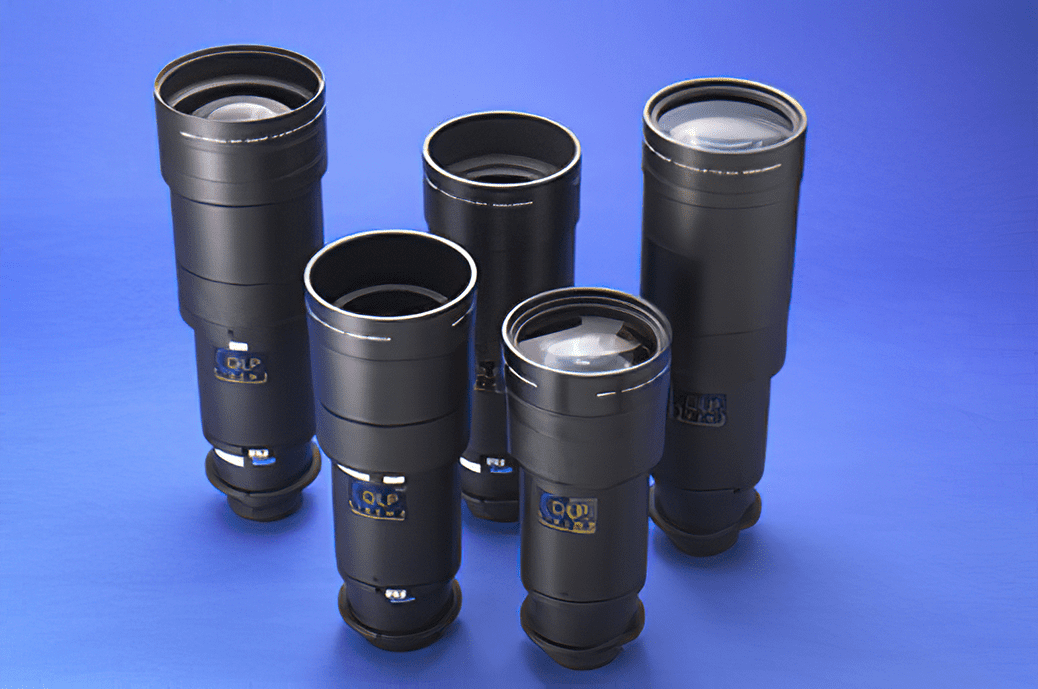
The new product line for digital cinema, launched around 2007, had been shipped and introduced to the market in quantities equivalent to 70% or 80% of movie theaters in developed countries by 2011. Later, in line with economic development, the number of cinema complexes rapidly increased in emerging countries as well, and demand has been growing ever since. The applications of our lens unit have also been expanding, including highly popular projection mapping at event venues and sightseeing spots.
New challenges underpinned by ultimate technologies
The high brightness and high image quality of lenses for large projectors, including cinema projection lenses, are attained by lens processing technology based on ultimate glass polishing. This technology has been passed down to the present from the days when lenses for single lens reflex cameras were manufactured. In addition to the Osaka-Sayama site, which has been responsible for production since the beginning, a research and development department for the specific optical technology was organized in the Takatsuki site in 1985. For further improvement, they were integrated as the Optical System Center in 1994. Assembly alignment , which aimed to adjust the unavoidable errors in glass polishing, was another indispensable technology for manufacturing high-accuracy products.
For over 10 years, we have also offered optical components for semiconductor manufacturing equipment using ultra-high-accuracy polished lenses derived from these technologies. Thus, we have reliably gained the trust of major manufacturers of manufacturing equipment. In view of further digitalization, the optical component business has significantly shifted its resources to industrial applications, such as semiconductor manufacturing equipment, to embark on new challenges.

*DLP and DMD are registered trademarks of Texas Instruments Inc.
In the interest of clarity, “Konica” and “Minolta,”—the trade names that were used before
the merger that
formed “Konica
Minolta”—are used throughout this text. Each company underwent a number of name changes
throughout their
history.
